It was early morning in Sost, the last town of Pakistan before the Chinese border. The air was crisp, the sound of flowing water echoed through the valley, and the morning sun bathed the Karakoram peaks in golden light. We had arrived the previous night around 8 PM, tired yet thrilled, knowing that the next morning would mark the beginning of a new chapter — a journey into one of the most secluded and breathtaking valleys of the north — Chapursan.
I woke up at 6:30 AM. The air outside was cold enough to make my fingers numb, but the excitement of the road ahead kept us warm. The locals greeted us with a friendly — a reflection of the cultural diversity that thrives even in these remote mountains.
Our base for the night had been Roomy Khawana Hotel, a cozy place in Sost. The small town itself is bustling with life because it serves as the last checkpoint for travelers entering or leaving Pakistan via the Khunjerab Pass. After this, the land transitions into China’s Xinjiang region, making Sost both a border town and a trading hub.
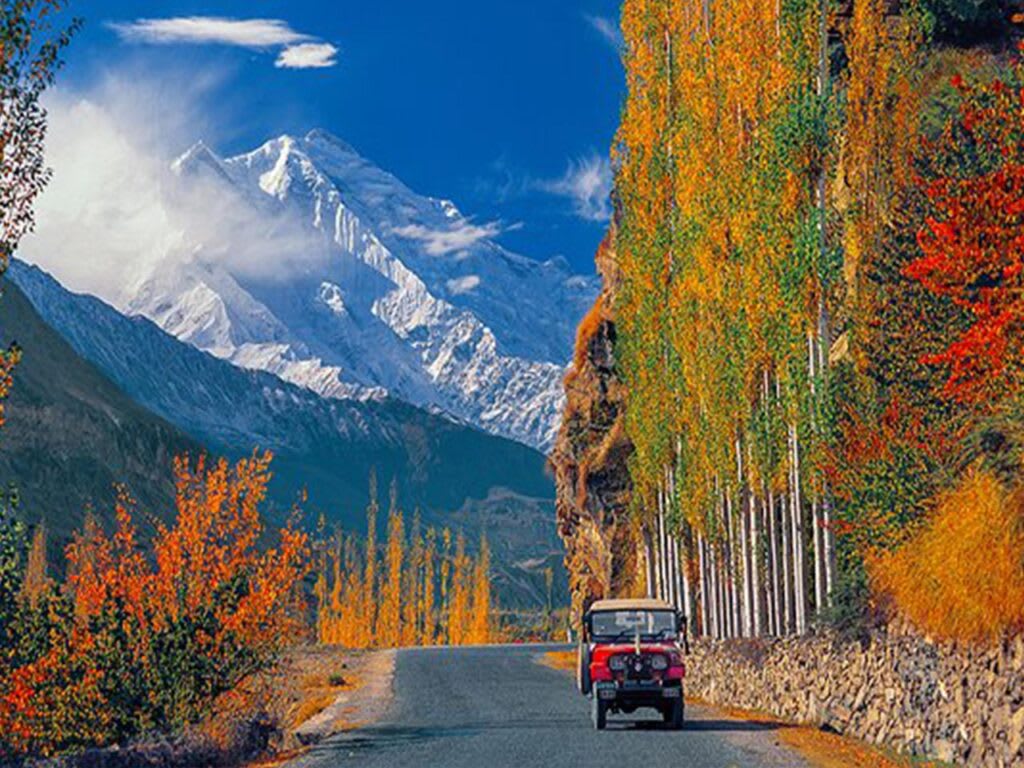
Breakfast at the Edge of the Border
The breakfast table was modest but fulfilling — parathas, bread, half-fried eggs, homemade apricot jam, and steaming cups of chai. It’s a simple combination, but up here, it tastes like heaven. The apricot jam, made from local fruit, was a reminder of Hunza’s agricultural richness.
Over breakfast, we discussed our plan. Chapursan Valley lies somewhere between 72 to 86 kilometers from Sost — depending on who you ask. The locals often say “it’s a four-hour track,” but with our cameras, stops, and detours, we knew it could easily stretch to six hours or more.
We packed our gear, mounted our motorcycles, and whispered a small prayer before starting:
The Road to Chapursan
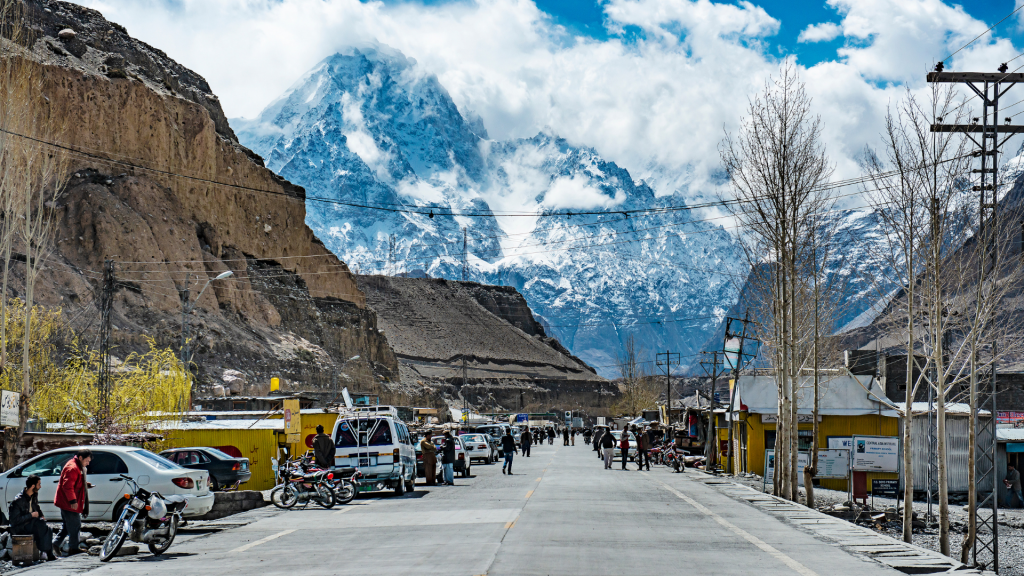
We rode past the main bazaar of Sost, a narrow but vibrant strip filled with small banks, general stores, and tea stalls. From tools to SIM cards, you can find almost anything a traveler might need. A few kilometers ahead, a signboard pointed towards Chapursan Valley, where the tarmac slowly gave way to a dirt road winding along the river.
Before proceeding, we stopped at a check post for registration — a standard procedure for travelers venturing into the border regions. The officer smiled and told us, “It’s a four-hour track, but since you’re filming, maybe six.” He wasn’t wrong.
As soon as we turned towards the valley, the scenery changed dramatically. The lush greens of Hunza were replaced by barren cliffs, colorful mountains, and a winding river carving its way through the rocks.
The landscape here was raw and untamed, resembling the Pamir ranges of Tajikistan and Kyrgyzstan. Chapursan, in fact, lies so close to the border that its farthest point touches Tajikistan. The people, language, and culture of this valley reflect that closeness.
First Glimpses: Where Water Meets Dust
The narrow dirt track snaked along a turquoise river. Occasionally, we crossed small waterfalls spilling down from glaciers above. The mountains seemed alive — glowing in shades of brown, red, and ochre.
“This valley is much bigger than Shimshal,” I told Ali. “Shimshal’s population is around 600. Here, there are around 550 houses and a total population of about 3,000 people.”
Ali nodded, his eyes scanning the horizon. “The colors here… they’re unreal.”
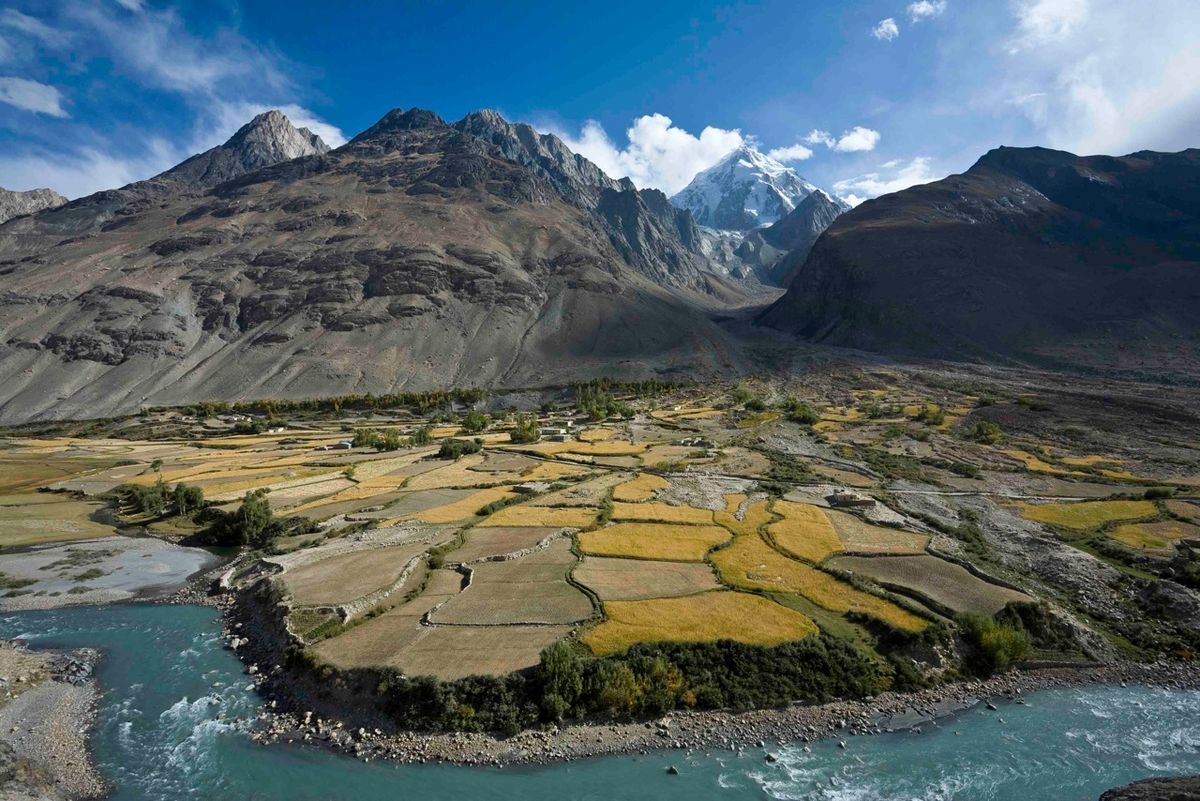
The locals speak Wakhi and Burushaski — ancient languages that link them to regions far beyond Pakistan. Wakhi is also spoken in the Wakhan Corridor of Afghanistan, while Burushaski finds roots in Hunza. The cultural blend gives Chapursan a unique identity — it feels both Pakistani and Central Asian.
Villages of the Valley
The first major village appeared about 15 kilometers into the journey. Its stone houses stood quietly against the mountains, smoke rising from chimneys. We could see women working in fields and children waving from afar. During the summer months — June to August — most men move to higher pastures with their cattle, leaving behind a tranquil, almost haunting silence.
“You’ll mostly see women and kids here,” I said to the camera. “The men take their animals up the meadows for grazing.”
It explained why the villages felt half-empty yet peaceful. Life here flows in harmony with the seasons — a rhythm that hasn’t changed for generations.
We crossed a few more villages before reaching one with a signboard that read: ‘Home of LUMS’. It seemed some development programs from Lahore’s LUMS University had taken place here. The village had two small hotels, a school, and even a healthcare center.
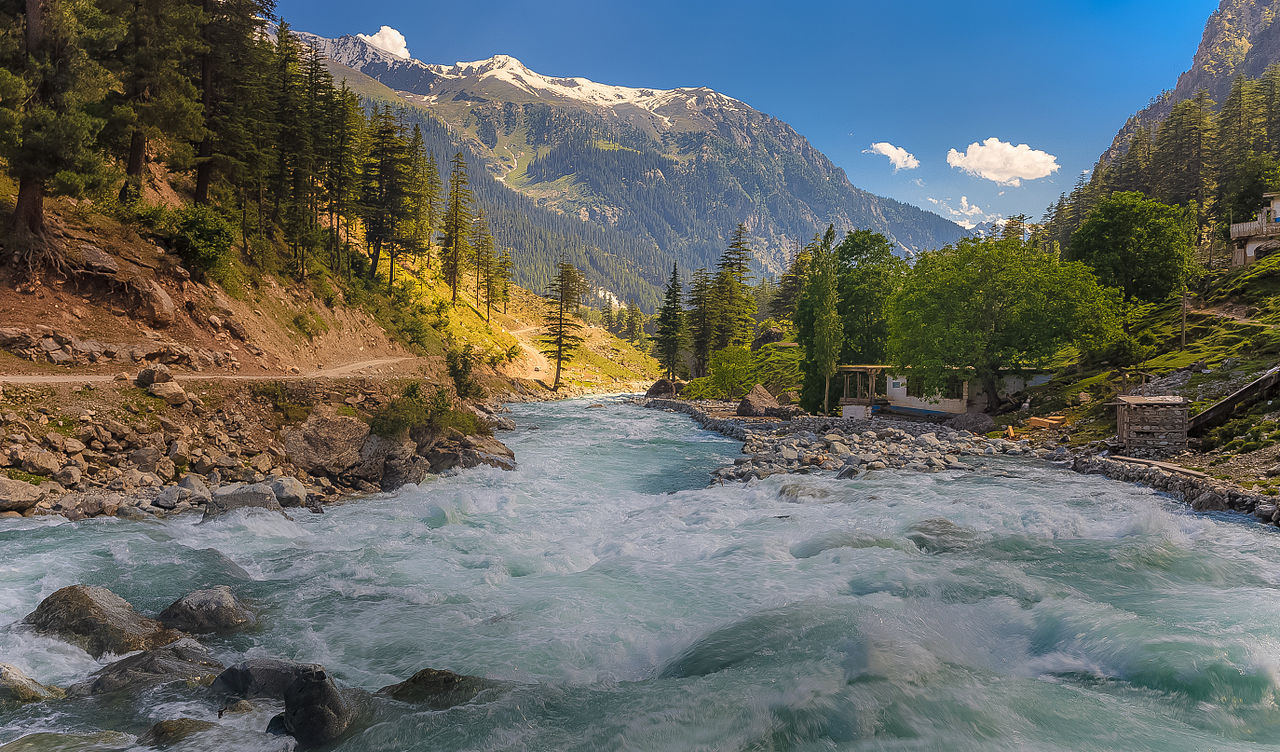
We greeted a local man standing near the road.
“Assalam Alekum! How far is Baba Ghundi’s shrine from here?”
“About one and a half hours,” he replied.
“Are we halfway through the valley?”
“More than that. You’re in Reshit now. Ahead is Seher Sabz, and there are about 11 villages in total in Chapursan.”
Eleven villages — each small, unique, and alive with stories of resilience and simplicity.
Kumpire Dior: A Rest Stop in the Middle of Nowhere
At Kumpire Dior, we spotted a small shop and decided to stop for some snacks. The shopkeeper, a smiling elderly man, offered us biscuits and tea while chatting about the harsh winters of the valley. He said they rely mostly on glacial water for farming.
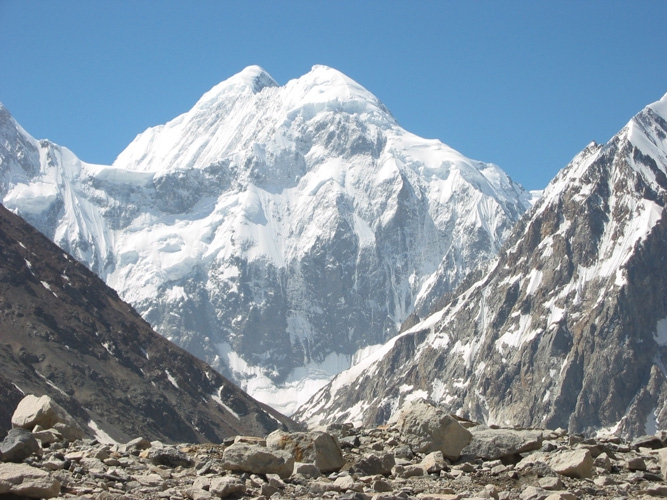
“There’s no shortage of water,” he said proudly. “Even if there’s less rain, the glaciers never stop.”
Despite its isolation, almost every village we passed had electricity and SCO network coverage. Some larger ones even had internet. But when the electricity went out, so did the signal — a reminder of how fragile connectivity can be in the mountains.
Zood Khun: The Last Village
A few kilometers later, we entered Zood Khun, the final settlement before the high meadows and the Baba Ghundi shrine. There was a small primary school, a few stone houses, and children playing near irrigation channels. The air was cooler here, and the snow-covered peaks of the glacier-fed mountains dominated the view.
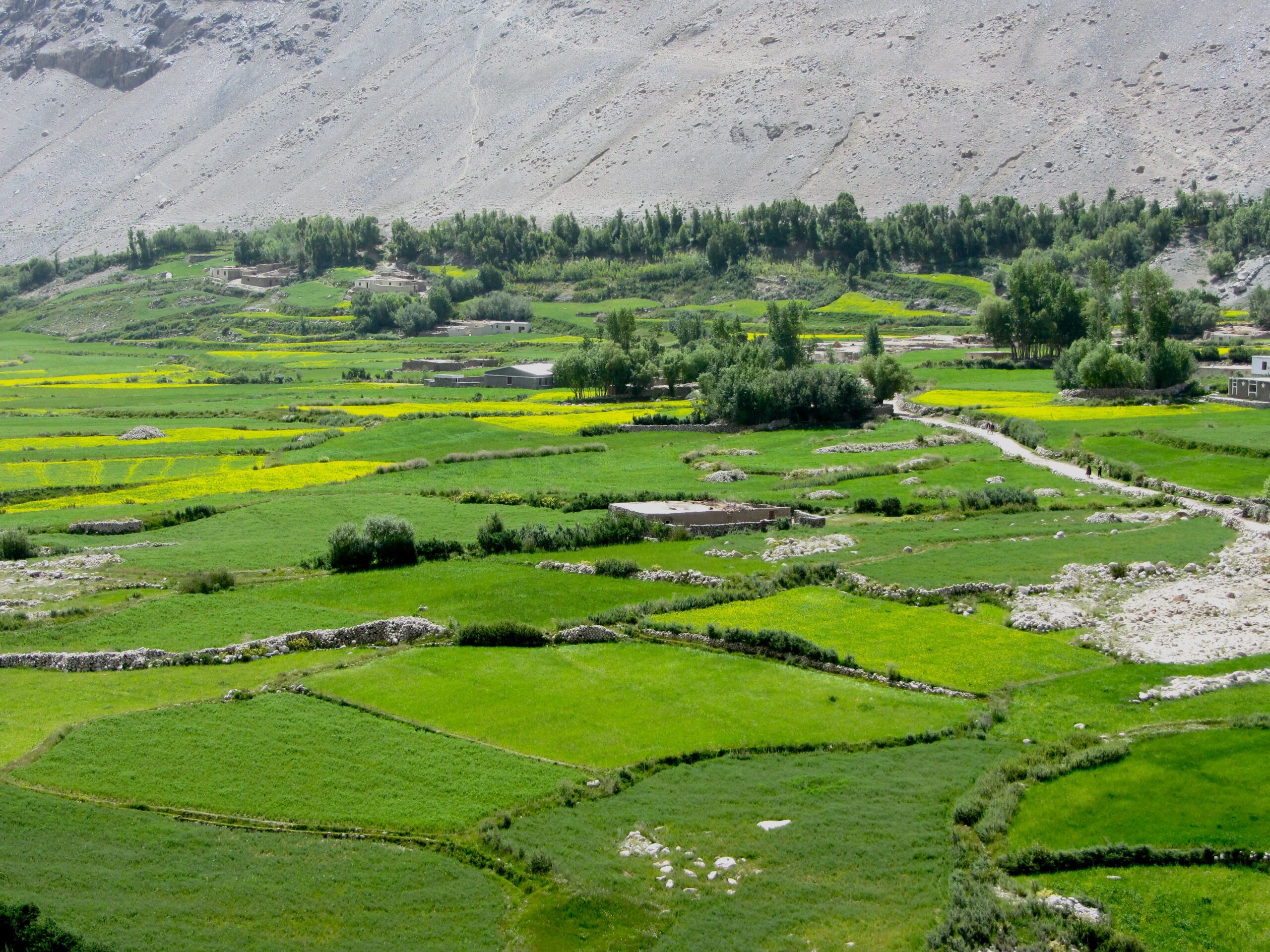
We rode past a wooden bridge suspended over a roaring stream. The planks creaked under the weight of our bikes, and we could see nails sticking out — a reminder to be careful. Still, the adventure of crossing it was exhilarating.
The Land of Water and Stone
Beyond Zood Khun, the landscape transformed again. The valley opened up into vast meadows, dotted with herds of goats and yaks. Streams gushed down from glaciers, cutting through the earth like veins of silver.
It wasn’t an easy track — rocky, uneven, and narrow — but every turn revealed something new: waterfalls cascading from unseen heights, cone-shaped hills resembling natural sculptures, and occasional glimpses of the white peaks marking the borders of Afghanistan and Tajikistan.
By now, we had been on the road for nearly four hours. It was one of the longest off-road rides I had ever done in a single day. My shoes were soaked from crossing a stream, but my spirits were high. This was adventure in its purest form.
Baba Ghundi: The Saint of the Borders
Finally, the road led us to a clearing — the sacred site of Baba Ghundi’s shrine. Situated where the borders of Pakistan, Afghanistan, and Tajikistan almost meet, it marks not just a geographical end, but also a spiritual one.
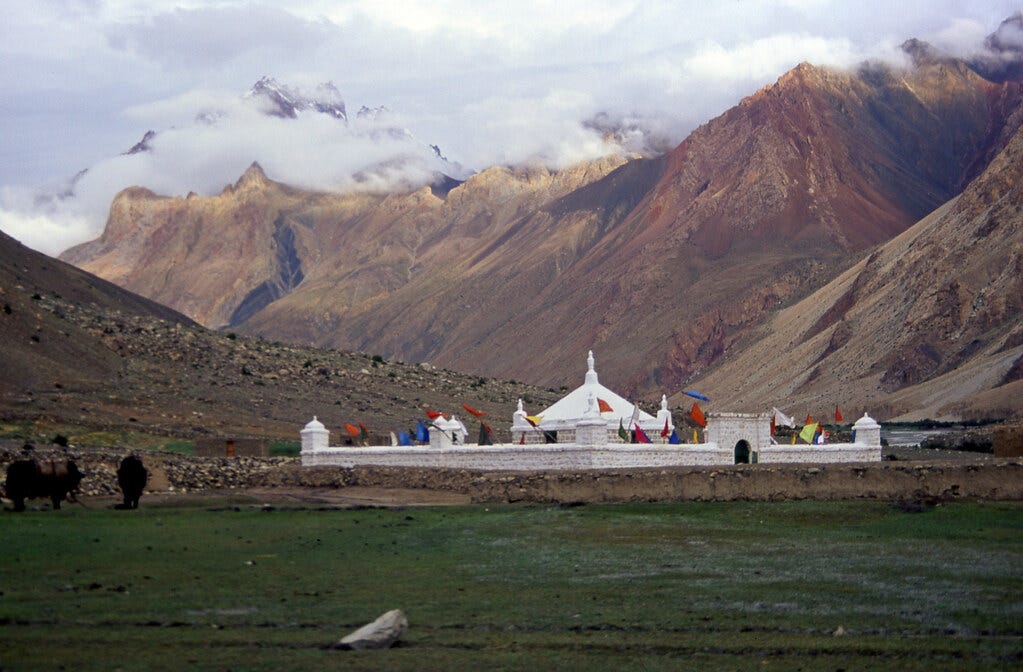
An army check post stood nearby. We greeted the soldiers, handed over our IDs, and chatted briefly. One of them smiled and said, “I started riding after watching your vlogs.” It was heartwarming — a reminder that even in the remotest places, stories travel far.
The shrine itself was simple — white walls, a green dome, and colorful flags fluttering in the wind. The locals believe Baba Ghundi came from Afghanistan centuries ago and preached peace in the region. Every year, during his annual festival, devotees from Pakistan, Afghanistan, and Tajikistan gather here to celebrate. It becomes a symbol of cross-border unity, faith, and friendship.
A local man, Abdul Hameed, welcomed us with hot tea.
“Do you live here?” I asked.
“Yes,” he said. “I serve the travelers who come to Baba Ghundi.”
He told us that before stricter border controls, people from all three countries used to visit freely. They traded goods — especially yaks, a valuable commodity in this terrain. Even now, some trade continues, though limited.
The Silent Beauty of Chapursan
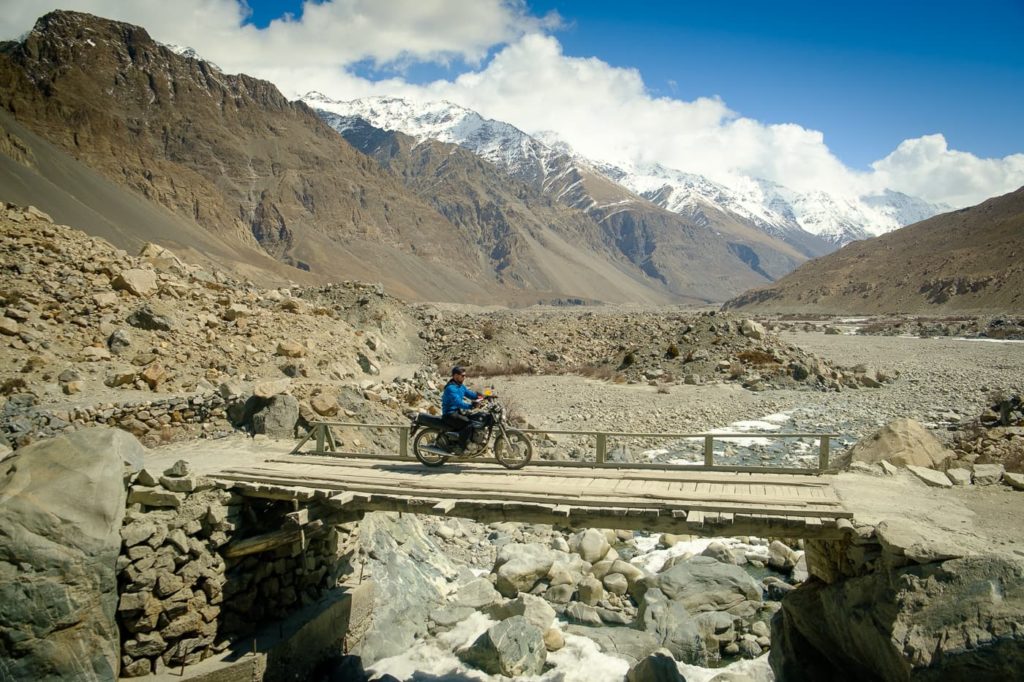
We sat by the stream, sipping tea offered by Abdul Hameed, and simply took in the silence. There was something surreal about that place — no noise, no rush, just wind and water echoing through the mountains.
“This,” Ali said softly, “is the real Pakistan people don’t see.”
He was right. In a world obsessed with cities, screens, and speed, valleys like Chapursan remind us what it means to be still — to exist in harmony with nature.
Return Journey: Reflections on the Ride
After spending some time at the shrine, we began our return journey. On the way back, we met a group of bikers camping near the river. They invited us to join, but we had already shared tea with the locals. We stopped briefly to say goodbye before continuing towards Sost.
As the sun dipped behind the peaks, the entire valley glowed in soft golden hues. It was like the mountains were bidding us farewell.
By the time we reached the main road, hunger had taken over. We stopped at a roadside café that served yak burgers — a local delicacy many travelers rave about. It was called “Burger of the House.” The patty was thick and juicy, made from yak meat, served with fries and a homemade sauce.
“It’s not the best burger of my life,” I laughed, “but it’s definitely one of the most memorable.”
Each burger cost PKR 1300, including a drink — a fair price for a meal at the edge of civilization.
Nightfall in Karimabad
We continued our ride to Karimabad, where we checked into Roomy Dastan Hotel. The place was built in a traditional style with wooden interiors, clean rooms, and — most importantly — hot water. After a long and dusty ride, that was a blessing.
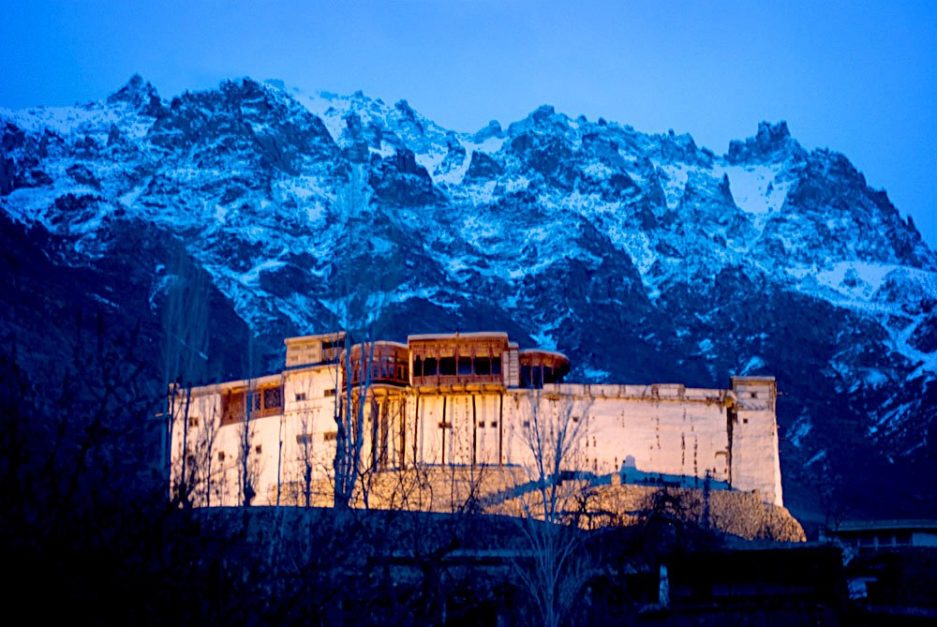
Ali was already in bed by the time I finished unpacking. The day had been long — nearly 80 kilometers of off-road adventure through 11 villages, rivers, glaciers, and meadows. But every second was worth it.
I sat by the window, looking out at the dark mountains, their silhouettes outlined by the moonlight. The hum of the distant river was the only sound breaking the silence. I thought about the people we had met — the shopkeepers, the soldiers, the villagers, and Abdul Hameed at Baba Ghundi — each of them living lives of quiet dignity in one of the harshest yet most beautiful places on earth.
Epilogue: Lessons from the Valley
Traveling to Chapursan isn’t just about scenic landscapes. It’s about understanding life at the edge — where borders blur, where simplicity thrives, and where hospitality flows as naturally as the mountain streams.
In these highlands, where Wakhi and Burushaski echo between the rocks, you realize how deeply connected humans can be despite geographical divides. The people of Chapursan live close to nature, and perhaps that’s why they remain grounded, generous, and at peace.
As I ended the vlog that night, I couldn’t help but smile.
“We worked really hard for this one,” I said to the camera. “I hope you enjoyed the journey as much as we did. Remember us in your prayers.
And with that, another chapter of adventure came to an end — but the memory of Chapursan, its rivers, its people, and its silent grandeur, stayed etched in our hearts forever.








